Winter 1965 Downunder to Christmas 1965: Seekers on Top
Autumn and Cilla Black
It was a Monday evening, 15 March 1965, as we approached the dark entrance to Melbourne’s Festival Hall, home to Victorian boxing championship bouts and ring-side wrestling. But tonight we were off to see Cilla Black. Cilla, Freddie and the Dreamers, Sounds Incorporated and Melbourne’s Merv Benton were part of a tour touted as The Big Show. My diminutive girl friend who had bought the tickets showed them to a gate keeper, who looked as if he had done three rounds with Sonny Liston. He took one look at us and said “Who have we here, little Miss Princess and Lord Fauntleroy! Step inside luvvies and someone will show you to your seats.” Inside the vast auditorium we were escorted from the very rear of the hall to the very front row. The stage was at least eighteen inches higher than our heads after we sat down – a neck craning view.
The prolific and popular Merv Benton belted through his latest hit songs – Come and get me, and It’s love baby and the crowd loved it. Next came Sounds Incorporated for a bit of a gallop through their repertoire. Everything seemed to be done at a frantic pace especially Rinky Dink and the terrible William Tell Overture. But all was forgiven when they played Spanish Harlem. The normality of Freddie & the Dreamers brought us back into the present until Freddie obviously bored with proceedings after a few songs, came back on stage with a feather duster, and prodded his guitarists between the legs with the duster. If Pete Townshend had been at hand Freddie would have had a guitar embedded in his skull, but the audience laughed at his schoolboys antics, and the Sounds Incorporated guys, lolling on their instruments, watched the proceedings thanking their lucky stars that they were Cilla’s backing band.
Cilla arrived to generous applause in a black mini dress and a brilliant smile and burst straight into You’re My World and immediately the audience was respectfully silent. Sounds Incorporated seemed to lift a level and Freddie, thank God, was nowhere to be seen. Cilla sang many of the crowd favourites – Anyone who had a heart, Baby it’s you, Alfie, A Lover’s Concerto and Make it easy on yourself – and won the hearts of the audience, as she would do for many years to come.
Warming up for Winter in Melbourne
By 16 April 1965, it was history in the making – Bobby Bright and Laurie Allen, a boisterous Melbourne duo, hit #1 on the 3DB Top Forty Charts with I belong to you, displacing the Beatles Rock & Roll Music. A little later in the year Bobby and Laurie appeared at the Tivoli Theatre as Tweedle Dum and Tweedle Dee in a children’s entertainment Alice in Wonderland during the school holidays. Where would it all end mothers of young daughters wondered.
As winter approached in Melbourne in June 1965 the Seekers entered the Billboard Charts at #71 still to attain dizzy heights in the US Charts, but in Melbourne on a chilly 18th of June the top three singles in the 3DB top Forty Charts were claimed by Australian Acts, and each were hometown artists – Normie Rowe at #1 with It ain’t necessarily so, The Seekers at #2 with In a world of our own and Merv Benton at #3 with I got burned (side b of Cincinatti Fireball). In a way it is amazing how good music keeps on keeping on as Lynne Randell also was successful with a rocky version of Summertime, a song from George Gershwin’s 1935 folk opera Porgy & Bess. Normie Rowe’s version of It ain’t necessarily so, whilst not an out and out rocker certainly got the girls in the front rows screaming.
In the same week five of the top ten singles were of Australian origin. This was a vast change in the composition of the charts previously dominated by American artists. Apart from the now ever present Beatles and the Rolling Stones, the Yardbirds had popped in at #12 with For Your Love, the Byrds at #13 with Mr Tambourine Man and Donovan at #14 with Catch the wind. The Byrds were one of the new US groups to enter the charts with the help of a Dylan original. By 24 June Peter Paul & Mary were back on the scene also with a Dylan original – The times are a-changing – and we knew for once that they were changing. Australian acts were also at #18 through #25, an unprecedented population of the charts, where overall 15 out of the Top 40 singles were by Australian Artists.
But by 2 July 1965 Elvis was at #1 with Crying in the Chapel. And who would have thought the King would be back on top of the charts across Australia. And Elvis stayed at #1 until late July when he was dethroned by an Irishman – Brendan Boyer and the Royal Showband Waterford and the terrible terrible terrible Hucklebuck – what the hell’s a hucklebuck! The Charts are an awful institution because apart from reminding us of the good times, they unerringly also remind us of the rotten choices made in one, producing a execrative song and secondly, the public lapping it up and buying it hook line and sinker, despite common sense and the critics’ harping voices. Ah beauty is in the eye of the beholder, we must keep calm and listen more carefully. Sanity prevailed towards the end of July when the Rolling Stones assumed #2 position with I can’t get no satisfaction and the Beatles stormed in at #30 with Help! supported by the film release in mid August. Horst Jankowski was skulking at #39 with A Walk in the Black Forest. Look out everyone.
Such was the popularity of the Beatles that the Rolling Stones did not get to #1 on the 3DB Top Forty. They remained at #2. The Beatles took over the #1 slot for five weeks straight with Help! succumbing to local band MPD Limited and their beat sound of Little Boy Sad in mid September. This was a big surprise, small town band out gunning the UK Beat Groups. In September some serious music had landed in the charts including Bob Dylan’s Like a Rolling Stone (which surprisingly reached its peak on the Sydney Charts at #8 in October), and the noisy Barry Mcguire and the massive Eve of Destruction. And the Easybeats sat at #30 with Wedding Ring. Little Boy Sad, on the Sunshine label (which was also home to Normie Rowe and Peter Doyle) sat on top of the 3DB charts until mid October, a five week stand, and then passed the twirly baton to Normie Rowe on 22 October with the old standard Que Sera, Sera, previously sung by the golden girl Doris Day in the 1956 film The man who knew too much. Doris had made the song so much her own that it appears an uncanny choice to make for a young man to sing, and the Melbourne girls bought the single by the truckload.
Sonny & Cher were knocking at the door at #2 with Sing C’Est la Vie and their earlier hit I’ve got you babe had stalled at #4, but they were consistent performers. Peter Paul & Mary also made another appearance at #39 with the melodic Early Morning Rain. It was really an exciting year for new and (old) music. Normie stayed on top of the charts until 12 November when Sonny & Cher eventually conquered all with Sing C’Est la Vie. Bubbling below again were the Beatles with Yesterday, a song that was never going to make # 1 in Melbourne despite Elvis’ success with Crying in the Chapel, the Rolling Stones and mum’s hell raiser Get off my cloud and the Hollies, always sharp with Look through any window.
There was more entertainment and gossip coming from the Flemington Race Track on 2 November at the fabled Melbourne Cup meeting. Apart from the made-in-heaven combination of Roy Higgins, Bart Cummings and Lightfingers, English model Jean Shrimpton stole the show in her simple above-the-knee virginal white linen dress. It was talked about for months as the focus of new fashion, design and music filtered young and old minds alike.
On with the show, Sonny & Cher outstayed their welcome at the top of the charts relinquishing top spot to the Seekers in December 1965. The Carnival Is Over remained on top well into the New Year. The seekers were taking the world by storm and also downunder in the old home town.
Indeed for all the claims of a British Invasion, Australian artists rallied strongly in the second half of 1965 with new songs and old songs made new, new record labels, and brand new artists. They shared the top spot for long periods particularly Normie Rowe, MPD Limited and the Seekers. Merv Benton and Peter Doyle also enjoyed substantial chart success. In the mix were many groovy groups from UK – The Animals, Manfred Mann, Yardbirds, Hollies, some middling groups like Herman’s Hermits, Freddie & the Dreamers, the Honeycombs, and from the US, We Five and the Byrds were new and exciting on the scene.
Meanwhile Back in the USA
Meanwhile back in the USA it was business as usual. Get as many singles out there and onto the Billboard Top 100 or Cashbox and go for it.
In the first week of Spring in the USA, Stop! In the name of love by the Supremes was sitting at #1 on the Billboard Top 100, followed by Herman’s Hermits with Can’t you hear my heart beat, and good old Freddie & the Dreamers at #3 with I’m telling you now. The Supremes did not have much to beat as the Beatles’ Eight Days a week was sitting at #7 and on its way down the charts.
The one thing that can be said about the Billboard Top 100 is that the songs certainly moved in and out with great rapidity, although some managed to hang in there for years; however this Spring was all movement as indicated by the number of songs that had a Red Star performance insignia, ie “sides registering greatest proportionate upward progress this week” – entirely related to sales.
On 3 April there were 46 Red Stars which included both US and UK groups: Nowhere to run – Martha & the Vandellas, Red roses for a blue lady – Vic Damone (groan), Game of Love – Wayne Fontana & the Mindbenders, Tired of waiting for you –Kinks, Go Now – Moody Blues, I know a place – Petula Clark, Come & Stay with me – Marianne Faithfull
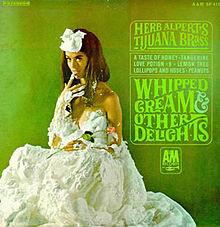 By 1 May, the top six songs on the Billboard Top 100 were UK groups with one exception – The Seekers at #5 with I’ll never find another you. Gary Lewis & the Playboys were plugging away at #7 with Count me in and obviously Billboard was paying attention. Crying in the Chapel, a big #1 in Australia had a Red Star at #51 (but failed to reached the top in the US), and good old Freddie & the Dreamers had three songs in the top 65! Herb Alpert & the Tijuana Brass, worldwide easy listening favourite, were lurking at #70 and stayed in the seventies with Whipped Cream. Everyone bought the album purely for the cover of a shapely model covered in whipped cream from head to toes, possibly shot at the Hugh Hefner mansion, but who is to know. There is a dusty second hand record store in the Midwest which has an entire wall devoted to this cover; the whereabouts of the contents is unknown.
By 1 May, the top six songs on the Billboard Top 100 were UK groups with one exception – The Seekers at #5 with I’ll never find another you. Gary Lewis & the Playboys were plugging away at #7 with Count me in and obviously Billboard was paying attention. Crying in the Chapel, a big #1 in Australia had a Red Star at #51 (but failed to reached the top in the US), and good old Freddie & the Dreamers had three songs in the top 65! Herb Alpert & the Tijuana Brass, worldwide easy listening favourite, were lurking at #70 and stayed in the seventies with Whipped Cream. Everyone bought the album purely for the cover of a shapely model covered in whipped cream from head to toes, possibly shot at the Hugh Hefner mansion, but who is to know. There is a dusty second hand record store in the Midwest which has an entire wall devoted to this cover; the whereabouts of the contents is unknown.
And at #76 – Super – cali –fragil – listic – expi – ali – docious – Yes Julie Andrews & Dick Van Dyke. The advantage of having a Top 100 over a Top 40 is that you can sure fit in a lot of different music that is miles apart in style and presentation, but popular all the same. On top on 1 May was Herman’s Hermits with Mrs Brown you’ve got a lovely daughter, which stayed on top for three weeks before being toppled by the Beatles’ Ticket to Ride. The Beatles’ stay was short lived as the Beachboys, on another wave, surfed to #1 with Help me Rhonda and stayed on top until late May 1965. The Beachboys continued to produce those surfing sunny sounds that the southern Californians loved and the rest of the world bought in thousands.
By the start of summer in the US, the Billboard Top 100 included many tracks that were proving popular in Australia, and some not so popular. Concrete & Clay by Unit 2 + 4 had a Red Star at #29, with the Yardbirds and For your love at #32, Guess Who and Shakin’ All Over at #36, Donovan – Catch the wind at #41. Sitting at #100 surprisingly was jazz vibist Cal Tjader with Soul Sauce – a cross-over entry into the Top 100, but made no further purchase in the charts.
With summer warming up the Stones hit #1 with I can’t get no satisfaction – something the Rolling Stones did not achieve in Australia. But there is no satisfaction when you consider that Herman’s hermits knocked the Stones off the number 1 spot with the ridiculous Henry VIII, I am!!!!!!!!!!! Why? Why? Why? Congress should have passed a special law against this travesty of popular judgement by the people for the people. But then it does say a lot about pop music and popular consensus. The only lasting satisfaction is that Henry did not stay there for long, being swiftly dethroned by the sunny Californians – Sonny & Cher and the outstanding I got you babe, which was quickly replaced by the Beatles Help! Beatles reign again. Game Over.
The Beatles stayed at #1 for four weeks keeping Bob Dylan at #2 with Like a Rolling Stone and the eight minute extravaganza stalled at #2, but doing much better in the US than in Australia. And whilst we perhaps should feel that we could have done better, at least we did not install Barry Maguire’s Eve of Destruction at #1 – which happened in the Fall – September 25, 1965 before being belted by the McCoys and Hang on Sloopy. Pop charts fickle? Oh maybe, maybe not, maybe…… Also on 25 September, We Five, with their pop/folk approach to You were on my mind settled in at #3, held up by the Dave Clark Five with Catch us if you can. The Dave Clark Five were also very popular in the US at this time, and bubbling below in the Top 100 were an illustrious group of songs and artists, struggling to find a place in the charts, but raging in many a teenager’s bedroom:
The In-Crowd – Ramsey Lewis; Like a Rolling Stone – Bob Dylan; It ain’t me babe – Turtles; Heartful of Soul – Yardbirds; You’ve got your trouble – Fortunes; Treat her right – Roy Head; We gotta get outta this place – Animals; Baby don’t go –Sonny & Cher; Unchained Melody – Righteous brothers; Do you believe in magic – Lovin’ Spoonful; and we are way down to $#19 of the Billboard Top 100. It was humming.
Yesterday hit #1 in late October and the next week on 6 November, the Rolling Stones hit #1 with Get off my cloud. And the shuffle at the top between the Beatles and the Stones continued. It was raining hits in 1965 and even Herb Alpert and the Tijuana Brass were swinging up the charts with a Red Star and A Taste of Honey, made popular a year or so earlier by the Beatles on their debut album Please Please me (Parlophone) (1963). The song did not appear on the US Beatle releases until 1965 on the album The Early Beatles (Capitol). Neck and neck with Red Stars the Supremes sat at #12 with I hear a Symphony and the 4 Seasons at #13 with Let’s hang On. Established US groups were still in the swim, whilst new comers, the Byrds sat at #31 with Turn, Turn Turn – which by 4 Dec was #1 with the Supremes sitting at #2, Lenny Barry 1,2,3 sitting at #3 and Frankie Valli and the boys sitting at #4 with Let’s hang On. Everyone was happy. Lots of records were sold and the US artists were right in there at the top. One of the most notorious non-appearance to note is that the Hucklebuck (whatever that is) did not creep into the Billboard Top 100, and apart from the Henry VII debacle, the American music buying public was not fooled all the time.
But come Christmas the Dave Clark Five were sitting at #1 with Over and Over and the Byrds at #2. Sitting at #5 with a red Star was Simon & Garfunkel with the prophetic Sounds of Silence. Red Stars on the 25 December Top 100 also included the Beatles – Day Tripper; Tom Jones – Thunderball (nothing stops James Bond); Knickerbockers – Lies; Kinks – A well respected man; and summing it all up Frank Sinatra, the maestro with It was a very good year.
Swinging London Town
Approaching Easter in swinging London, the entire Top 20 hitmakers comprised essentially English groups or artists, apart from His Bobness at #7 with The times are a-changing and Keely Smith at #17 with You’re breaking my heart, a dated 50s sounding love song. Keely Smith was a surprise, originally married to the irrepressible jazzer Louis Prima, she was essentially an American jazz singer and entertainer, but had released an album in 1964 titled “Sings the John Lennon Paul McCartney Songbook”, hence was well known across the pond. And our man, Cliff Richard, who sings in the rain at Wimbledon was at #1 with The minute you’re gone – another dreadful sugary ballad, forgettable by any count. The Yardbirds sat at #2 with For your love and Unit 2 + 4 enjoyed third spot with Concrete & Clay. So already we can see subtle differences between US and UK charts and markets. For the remainder of the year all the number ones were of English origin except in December 1965, when the Seekers (based in London) reigned supreme. More on that later.
By May 1965 the Beatles were on top with the magical Ticket to ride. There were only five outsiders in the Top 20 charts – Roger Miller at #2 with King of the Road, (and from his earnings with this number invested in a chain of “King of the Road” motor inns – well why not, singing might not always pay the bills), Bob Dylan at #12 with Subterranean Homesick Blues, The Supremes with Stop! In the name of love at #17, and Shirley Ellis at #20 with The Clapping Song – a forerunner of rap and dance. The Seekers were sitting at #4 with A world of our own.
Come Winter, Sandie Shaw sat at #1 with Long Live Love topping Elvis at #2 with Crying in the Chapel but eventually reaching #1 later in the month. Other US Acts were creeping into the UK Charts – The Everly Brothers at #3 with The price of love, Burt Bacharach at #4 with Trains and boats and planes and Gene Pitney – Looking through the eyes of love at #20. Lifting our heads out of the charts momentarily, on 12 June a public announcement was released advising the nomination of the Beatles to receive MBEs. Apart from being a shock to Brian Epstein and John, Paul, George & Ringo, many recipients of the Member of the Most Excellent Order of the British Empire returned their MBEs in protest at the suggestion that the four moptops should be awarded something so grand and by the Establishment.
By mid Winter, a cold July, the Hollies, a hard working group from Manchester reached #1 with I’m Alive; the Byrds were at #4 with Mr Tambourine Man. Lulu, Donovan, Dusty Springfield graced the charts along with other groovers – the Who, Kinks and Animals. Joan Baez reached #14 with There but for fortune, a song that does not appear to have made it on any of her albums. Ronnie Biggs was also back in the news as the Great Train Robber escaped from prison on 8 July before heading off to live peacefully downunder in Adelaide for a few years.
Help! hit number one in August along with the release of the film to which thousands flocked, as we all did in Melbourne. And believe it or not Horst Jankowski was shimmying up the charts with A walk in the black forest. There are no limits to people’s taste in music and the black forest was threatening to take over our lives.
Springtime in London and the Rolling Stones finally got complete satisfaction in topping the charts. The Walker Brothers sat at #2 with Make it easy on yourself, whilst Sonny & Cher’s I’ve got you babe settled into the #3 spot. Horst Jankowksi was knocking at the door like a wolf from the dreaded black forest at #4. Although, in fairness, Jankowksi did get to #1 in the Billboard Adult Contemporary Chart and A Walk in the black forest gave this German classical pianist his foothold into the easy listening market, eventually releasing some 30 or so albums during his lifetime.

Paul, George, John and Ringo hold up their MBE awards at a news conference following their investiture on October 26, 1965 at Buckingham Palace in London . AFP / UPI PHOTO (Photo credit PETER SKINGLEY/ AFP/Getty Images)
The Beatles were invested with their MBEs on 26 October 1965 rocking up to Buckingham Palace in John’s black Rolls Royce. It is understood that the Queen asked Ringo whether he started the band to which he is reported to have replied, “No maam I was the last to join….I’m the little fellow.” And as there were many more MBEs to be handed out the conversation got no further. The Queen can’t just fuzz about at these occasions somebody has to make the tea and the cakes, clean the china, polish the silver, …. rattle their jewellery. On reflection it was probably most astute to have asked Ringo rather than John.
A most unlikely number 1 sat at the top of the charts in October. Ken Dodd and the saccharine ballad Tears – a shocker of a song, but there you have it. Ken Dodd, almost unknown downunder, is one of England’s best loved comedians (and he must have sung Tears as a joke) and at 88 years of age he is still performing. You can catch him on his latest tour The Ken Dodd Happiness Show at Southport Theatre and Flower Hall on 21 November 2015. Marvellous. Check out the following interview with Ken Dodd and the Beatles on 27 November 1963 at the BBC. It is a pretty hair-raising experience and everyone seemed to enjoy it all the same.
The Rolling Stones balanced the ledger in November by taking over the top spot with Get off my cloud. Ken Dodd’s Tears was still a worthy second. November was a bouncy month with some fine new English pop songs – Yesterday man – Chris Andrews (#3), It’s good news week – Hedgehoppers Anonymous (#8), My Generation – The Who (#10), If you gotta go, go now – Manfred Mann (#19); but another eight US artists were encroaching on UK territory and taking up a bigger share of the charts, reversing the effects of the invasion.
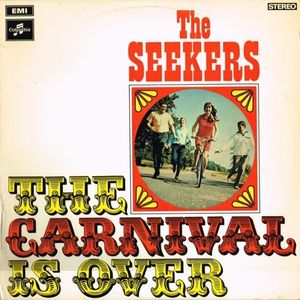 By Christmas 1965 it was all over – The Seekers were number one with The carnival is over – topping off a marvellous year for the Australian group in UK with a #1 I’ll never find another you in February and a #4 A world of our own in May. 1965 was, as Frank Sinatra sang, A very good year.
By Christmas 1965 it was all over – The Seekers were number one with The carnival is over – topping off a marvellous year for the Australian group in UK with a #1 I’ll never find another you in February and a #4 A world of our own in May. 1965 was, as Frank Sinatra sang, A very good year.
Well that’s it for 1965. In our next episode we will look at the dream albums of 1965 and see if we can come up with a best reckoning of what were the best and maybe worst in a breaking year with so many new acts and new material.
Listen to the songs below, they might bring a fond smile or a rueful sense of loss. 1965 was a year full of change and fun.




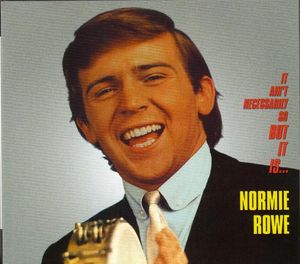
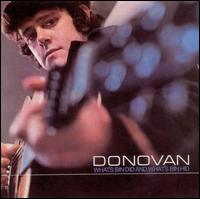
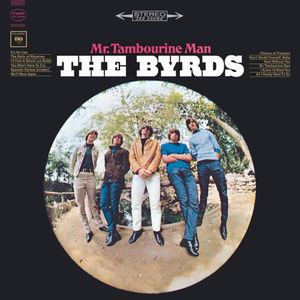
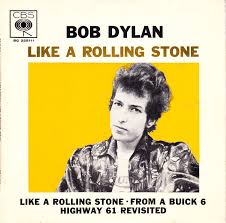
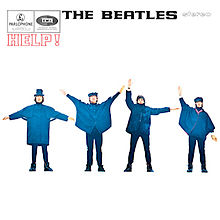
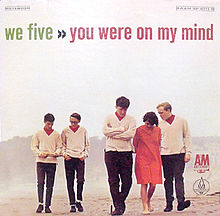
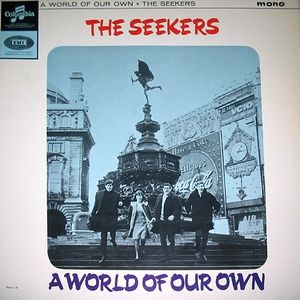
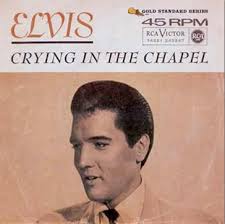

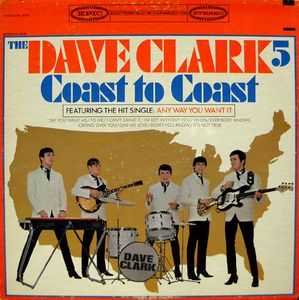




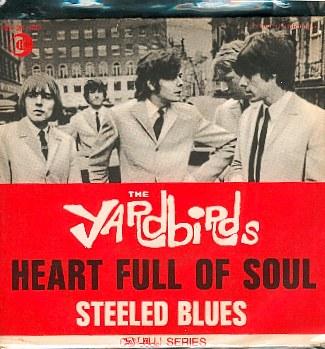
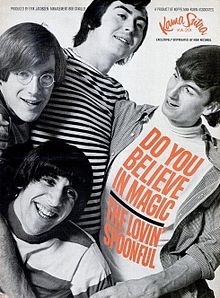

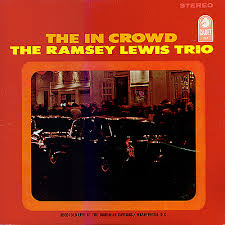
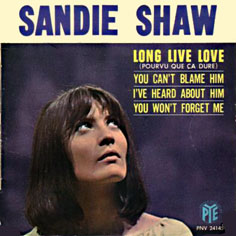
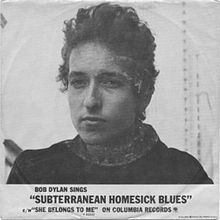

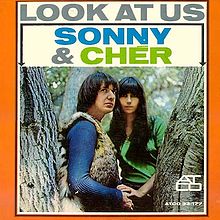

Leave a Reply